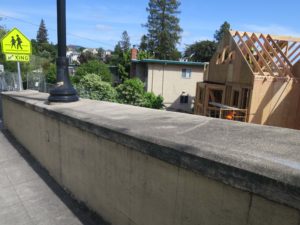On May 4, 2016, in the City Council Chambers the Piedmont Park Commission held its monthly Commission meeting, which was called to order at 5:30 p.m. by Chair Jamie Totsubo. The main item on the agenda to be discussed was the request from the residents of Lorita Avenue to replace plantings and trees on their cul de sac.
~~~~~~~~~~~~~~
Before beginning the regular agenda, Chair Totsubo opened the meeting to those at the meeting for the Public Forum, where audience members can address any items not on the agenda. The Public Forum began with Sam Cheng and Alex Chueh, two seniors at Piedmont High School, who requested the addition of lights around the softball field.
They were followed by Kalen Davison, another senior at PHS, who asked for the nets to be periodically checked at the tennis courts, to make sure that they were still functional and at the correct height.
Davison was followed by Madison Tenney and Kaelli Thiel, two more students at PHS, who asked for a drinking fountain to be installed in Dracena Park. Once Tenney and Thiel concluded, Commissioner Totsubo moved onto the meeting’s regular agenda.
Lorita Avenue Trees and Plantings –
To begin the regular agenda, Commissioner Totsubo opened up the meeting to the request from Lorita Avenue’s residents. Maggie and Lannie Spencer, the two petitioners for this topic, asked the Commission to plant street trees to replace the Agapanthus growing at the end of the cul de sac.
For this project, five new Ginkgo trees were offered by a developer in 24’’ boxes. The petitioners asked the city to use these new Ginkgos to infill among the existing Ginkgo trees, in addition to replacing the old Agapanthus.
Maggie Spencer elaborated that this was the perfect time for tree replacement and planting because of the large number of homes being remodelled along Lorita. She also informed the Commission that all of her neighbors had signed the request, and that the residents at 28 Lorita Avenue had pledged to water the new trees due to the lack of installed irrigation.
After Mrs. Spencer, several other residents spoke in favor of the new trees. Annie Hall, a neighbor to Lorita Avenue whose fence had previously been damaged by invasive trees, was in favor of the petition as long as the new tree didn’t block sunlight in her yard or have a large root system which could compromise her new fence.
Devan Joseph followed, voicing his support for the aesthetic benefits of newer greenery. He was followed by Andrew Coleman, the resident of 28 Lorita Avenue, who promised to water any new trees.
After hearing all of these comments, Commissioner Totsubo asked for the votes of her fellow commission members regarding the Spencer’s request. Each member Betsy Goodman, Jim Horner, Jonathan Levine, John Lehanan, Brian Mahany, Patty Siskind, and Jamie Totsubo, herself, were in favor; the motion for new trees on Lorita Avenue passed.
Once the decision was finalized, Chair Totsubo led the meeting through the five remaining agenda topics, including four updates on completed and future parks projects, and the monthly maintenance report.
Dracena Park Drinking Fountain for Dogs and People –
During the meeting, Kaelli Thiel and I spoke about the lack of accessible water in Dracena Park for both parkgoers and their dogs. Currently, there is only one drinking fountain by the swingset in the lower playground area, and a waterfall faucet in the sandpit. Although dogs could use the latter for water, many parents are uncomfortable having larger pets around their children.
Since the trail around Dracena Park is fairly long, and the walk to the fountains is off of the dog trail itself, Kaelli and I proposed the installation of a dual drinking fountain with a lower dog dish and faucet for dogs, and an upper fountain for people. We asked for it to replace the orange cooler which currently acts as the dog’s drinking faucet along the upper walk of Dracena Park, allowing for a permanent and accessible source of water along Dracena’s trail.
Madison Tenney, Piedmont High School Senior



